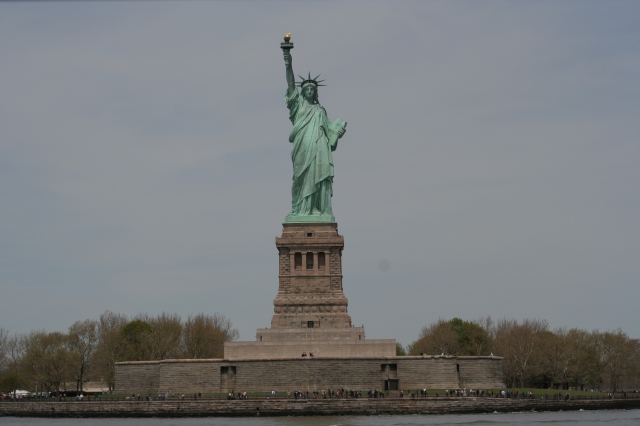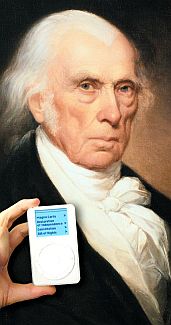It is a well-established fact that the federal government’s role over every area of our lives has grown enormously since our nation’s founding. While the authority of the federal government was established by the Constitution which was adopted in 1787 and ratified in 1789, this growth has occurred in spite of stringent Constitutional limits.
It doesn’t take a rocket scientist to see that the dramatic increase in federal power has come at the expense of individual rights and the rights of the States. However, by carefully looking back in our history we can see when and where our nation left the original intent of the Constitution and got on the road to big government. By understanding the cause and nature of this shift we become better prepared to diagnose current big government problems. Armed with that knowledge we can spread the word and push our government back to the Constitution.
When did the massive growth of federal power begin under our Constitutional form of government?
Randall G. Holcombe provides a well-documented history of federal expansion in his article entitled “Federal Government Growth Before the New Deal.” Published in The Freeman (September, 1997), Holcombe writes:
The origins of federal growth are in the Constitutional Convention. But the modern period of growth began with the Progressive Era before World War I. Contrary to popular belief, that growth continued through the 1920s. The percentage by which the federal government grew was greater during Herbert Hoover’s four years as president than during the first seven years of the New Deal. Roosevelt merely continued a long-standing trend.
What triggered this growth? Holcombe points out that over time the federal government shifted mandates from protecting personal liberty to that of extending economic vitality. The 16th Amendment grant of the power to tax incomes further propelled this transformation. Holcombe explains:
The story of the growth of the federal government can be divided into two parts: before and after 1913, when the 16th amendment to the Constitution, which permitted a federal income tax, was ratified. In 1913 federal spending was a mere 2.5 percent of GNP (today spending is almost ten times that level); so if the federal government is measured only by spending, little growth took place before the income tax. Before 1913, however, the federal government grew in other ways, by enlarging its power and changing its mandate. When the colonies came together to form the United States, the founders viewed the new government as the defender of its citizens’ liberty. That meant protecting their rights-and in those days the most significant threat to the rights of individuals was, in nearly everyone’s eyes, the government itself. By 1913 the federal government had been transformed into an organization not to protect rights, but, ostensibly, to further the nation’s economic well-being. [Note that Holcombe’s 1997 federal spending figures of nearly 25% of GNP would be considered small when compared to the staggering debt-fueled expenditures of the past decade.]
The above quote explains when but how did federal expansion begin? Holcombe pointed out that the “first major event in the growth of the federal government was the ratification of the Constitution in 1789.” The Constitution was much stronger than the previous Articles of Confederation. However, compared to the Articles, Holcombe argues that the Constitution created a federal government that “gained more power, was less accountable, and had greater latitude to determine its own scope of action.”
While the debate over ratification of the Constitution was fierce in the late 1780s, few today would argue against the wisdom of its clearly limited increase in federal power over the Articles of Confederation. While lovers of liberty rightly oppose concentrated and unaccountable government power, a weak government — like that created under the Articles of Confederation — also has problems because it cannot safeguard anyone’s rights. Clearly a strong yet constrained federal government is vital to our nation. However, must federal power and reach grow larger and larger year after year? In our American history, can we point to a tipping point that produced the trend for rapidly growing federal intervention? Holcombe provides an answer:
Undoubtedly the biggest event in the growth of the federal government was the Civil War, which established its supremacy over the states. The Civil War brought much new power to the federal government, and laid the groundwork for the growth of interest groups. The first interest group to systematically raid the Treasury for its own benefit was the war veterans.
The growth of federal spending and intervention following the Civil War continued at an accelerated pace. Holcombe continues:
While veterans were a model for future interest groups, the Treasury at that time had decidedly limited means. At any rate, other groups were more interested in regulatory benefits. The Interstate Commerce Commission was created in 1887, and the Sherman Antitrust Act passed in 1890. The transformation of the U.S. government continued as the turn of the century ushered in the Progressive Era. The Food and Drug Administration was created in 1906, the Federal Reserve in 1913, and the Federal Trade Commission in 1914. A government initially committed to protecting the liberty of its citizens now seemed to be just as firmly committed to looking out for their economic welfare.
The Progressive Era was interrupted by World War I, during which federal power advanced in unprecedented ways. The railroads were nationalized, waterborne shipping was regulated, and the United States Food Administration, created in 1917, controlled all aspects of the food industry, from agriculture to distribution to sales. Similar regulation was applied to fuels, and eventually to the whole economy. When the federal income tax was introduced in 1913, the highest tax bracket was 7 percent for all income above $20,000. Because of the demand for war-related spending, by 1918 the highest rate rose to 77 percent beginning at $4,000.
Holcombe provides a summary of the rapid growth of federal non-war spending during the 1920s, the tremendous growth in law-enforcement budgets during the Prohibition era, the beginnings of agricultural price supports, the influence of Keynes and Marx on economics, the establishment of federal regulations for businesses via antitrust laws, and the creation of many federal corporations. Regarding federal corporations, Holcombe noted that
[t]hese corporations provided a model for government growth that extended through the 1920s to the present day. In 1923, 12 federally owned banks were created by the Federal Agricultural Credits Act. In 1924 the Inland Waterways Corporation was established to operate vessels on the Mississippi River, and in 1929 the Federal Farm Board was established to finance agricultural price supports. Creation of those corporations was integral to the growth of the federal government during the 1920s, but their purpose was also significant. In each case they were established to help further the economic well-being of a particular group of Americans, reinforcing the federal government’s transition from a guardian of liberty to an organization designed to oversee the national economy.
It is quite surprising to think that all the above referenced federal government expansions were in place before Franklin D. Roosevelt’s New Deal. Holcombe concludes:
The New Deal is often seen as the pivotal event in the growth of America’s twentieth-century Leviathan. But the federal government has grown since its inception. The most important event in the history of federal government growth was undoubtedly the Civil War. Then, supported by the popular demand for more government involvement in the economy, the ideological foundation of the massive growth in federal spending was laid during the Progressive Era at the beginning of the twentieth century. The federal income tax made that growth in spending possible.
That the federal government grew during FDR’s presidency is undeniable. But [Presidents] Wilson and Lincoln had already set precedents for increases in government power in wartime. Thus, the main factors underlying the growth in government were firmly in place well before the New Deal.
Clearly, the federal government’s growth and expansion quickly resulted in an erosion of rights for both individuals and the States. Add to this trend the rapid growth under the New Deal and beyond — including the Great Society, the Post 9/11 years, and the Obama Presidency — and few would even try to argue that we really live under a Constitutional republic today. Given this reality, is anyone surprised that millions of patriots now seek to defang the federal Leviathan that usurped the Constitution and is trampling our rights?
As Americans, let us all work together to preserve our liberty and restore the People’s rightful place within our government!
Image Credit: Susie B


